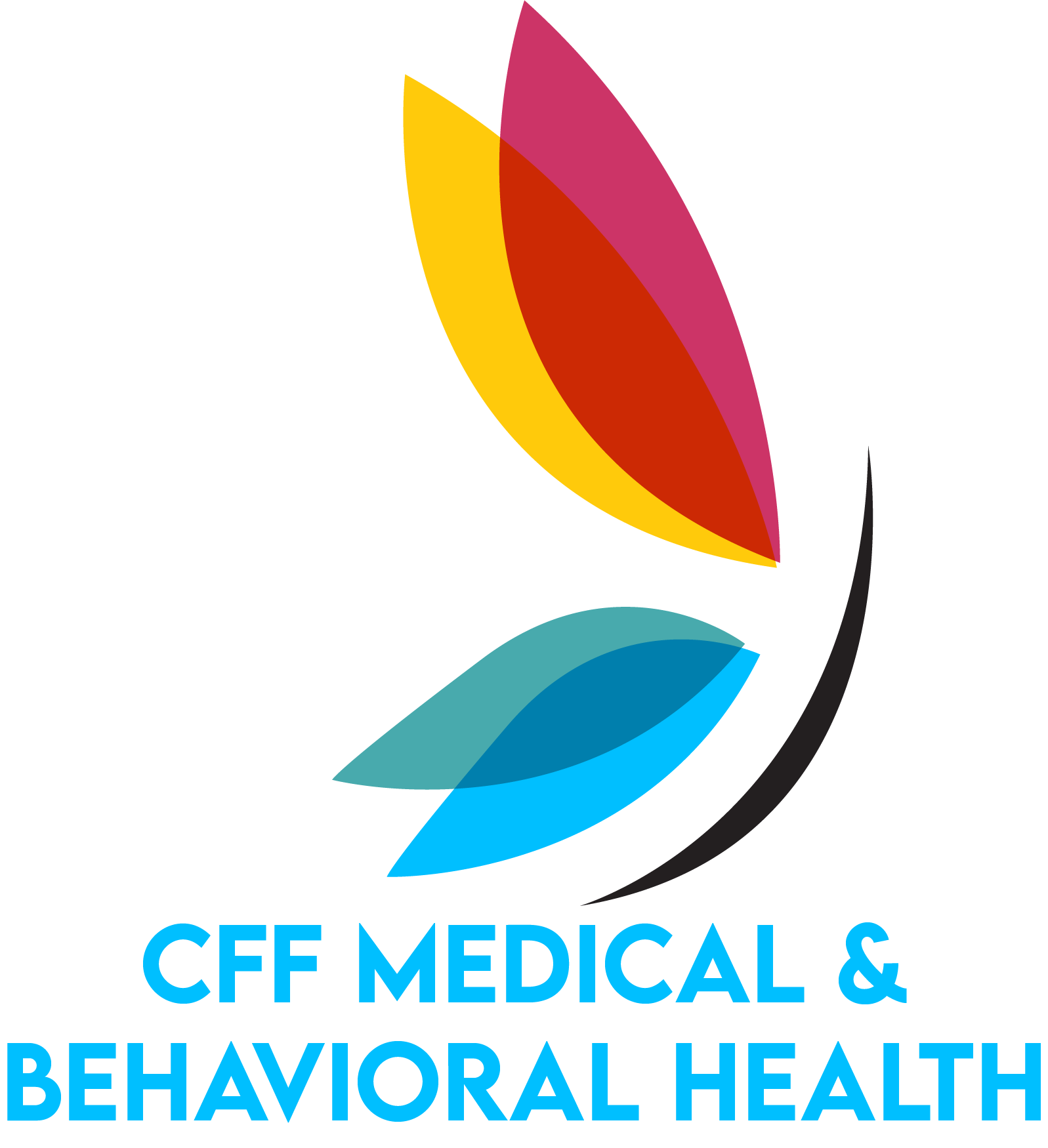Understanding Cognitive Behavioral Therapy (CBT)
What is CBT?
Cognitive Behavioral Therapy (CBT) is a form of psychotherapy that focuses on identifying and changing negative thought patterns and behaviors. It is based on the concept that our thoughts, feelings, and behaviors are interconnected, and that altering negative thoughts can lead to changes in feelings and behaviors. CBT is a structured, goal-oriented therapy that is typically short-term and involves active participation from the individual.
CBT is widely used to treat a variety of mental health conditions, including anxiety, depression, and substance use disorders. It is supported by extensive research and has been proven effective in helping individuals manage their symptoms and improve their overall well-being. For those interested in learning more about the signs that may indicate the need for professional mental health treatment, visit our article on signs you may need professional mental health treatment.
How CBT Helps with Anxiety and Depression
CBT helps individuals with anxiety and depression by addressing the underlying cognitive and behavioral patterns that contribute to these conditions. Here are some key ways in which CBT can be beneficial:
- Identifying Negative Thought Patterns: CBT helps individuals recognize and challenge negative thoughts that contribute to anxiety and depression. By identifying these thoughts, individuals can begin to understand how they influence their emotions and behaviors.
- Cognitive Restructuring: This technique involves replacing negative thoughts with more realistic and positive ones. By changing the way individuals think about themselves and their situations, CBT can help reduce symptoms of anxiety and depression.
- Behavioral Activation: For individuals with depression, CBT encourages engagement in activities that bring pleasure and a sense of accomplishment. This helps counteract the withdrawal and inactivity often associated with depression.
- Exposure Therapy: For those with anxiety, CBT may involve gradual exposure to feared situations in a controlled and safe manner. This helps individuals build confidence and reduce avoidance behaviors.
- Developing Coping Strategies: CBT equips individuals with practical skills to manage stress and cope with challenging situations. These strategies can be applied in everyday life to maintain mental health and prevent relapse.
- Goal Setting and Problem-Solving: Setting achievable goals and developing problem-solving skills are integral parts of CBT. This helps individuals take proactive steps towards improving their mental health.
| Technique | Description |
|---|---|
| Identifying Negative Thought Patterns | Recognizing and challenging negative thoughts |
| Cognitive Restructuring | Replacing negative thoughts with realistic ones |
| Behavioral Activation | Engaging in pleasurable activities |
| Exposure Therapy | Gradual exposure to feared situations |
| Developing Coping Strategies | Learning practical skills to manage stress |
| Goal Setting and Problem-Solving | Setting achievable goals and solving problems |
For more information on how therapy can help with anxiety and depression, visit our article on the role of therapy in treating anxiety depression and ptsd.
By understanding how cognitive behavioral therapy helps with anxiety and depression, individuals can make informed decisions about their mental health treatment. If you are considering CBT, it is important to find a qualified therapist who can guide you through the process. For tips on choosing the right mental health provider, visit our article on how to choose the right mental health provider for your needs.
Benefits of CBT for Mental Health
Cognitive Behavioral Therapy (CBT) offers numerous benefits for mental health, particularly in addressing anxiety and depression. By focusing on the interplay between thoughts, feelings, and behaviors, CBT helps individuals develop practical skills to manage their mental health more effectively.
Addressing Negative Thought Patterns
One of the primary benefits of CBT is its ability to address negative thought patterns. These patterns often contribute to feelings of anxiety and depression. Through CBT, individuals learn to identify and challenge these unhelpful thoughts, replacing them with more balanced and realistic ones.
| Negative Thought Pattern | CBT Technique | Outcome |
|---|---|---|
| Catastrophizing | Cognitive Restructuring | Reduced anxiety |
| Overgeneralization | Thought Records | Improved mood |
| Black-and-White Thinking | Socratic Questioning | Balanced perspective |
By addressing these negative thought patterns, we can help individuals break the cycle of negativity that often exacerbates their mental health issues.
Developing Coping Strategies
CBT also focuses on developing effective coping strategies. These strategies are essential for managing stress, anxiety, and depression. By learning and practicing these techniques, individuals can better handle challenging situations and reduce their emotional distress.
Some common coping strategies taught in CBT include:
- Deep Breathing Exercises: Helps to calm the mind and reduce physical symptoms of anxiety.
- Progressive Muscle Relaxation: Reduces tension in the body and promotes relaxation.
- Mindfulness Meditation: Encourages present-moment awareness and reduces rumination.
These coping strategies empower individuals to take control of their mental health and improve their overall well-being.
Building Problem-Solving Skills
Another significant benefit of CBT is the development of problem-solving skills. These skills are crucial for effectively managing life’s challenges and reducing feelings of helplessness and hopelessness often associated with depression and anxiety.
| Problem-Solving Step | Description |
|---|---|
| Identify the Problem | Clearly define the issue at hand. |
| Generate Solutions | Brainstorm possible solutions without judgment. |
| Evaluate Solutions | Assess the pros and cons of each solution. |
| Implement a Solution | Choose and apply the best solution. |
| Review the Outcome | Reflect on the effectiveness of the solution and make adjustments if necessary. |
By building these problem-solving skills, individuals can approach difficulties with confidence and resilience, leading to improved mental health outcomes.
For more information on how CBT can help with anxiety and depression, visit our article on the role of therapy in treating anxiety depression and ptsd. If you are considering seeking professional help, learn more about how to choose the right mental health provider for your needs.
The Role of CBT in Overcoming Anxiety
Cognitive Behavioral Therapy (CBT) is a powerful tool in managing and overcoming anxiety. By focusing on the interplay between thoughts, feelings, and behaviors, CBT helps individuals develop effective strategies to cope with anxiety. Here, we explore three key techniques used in CBT to address anxiety: cognitive restructuring, exposure therapy, and relaxation techniques.
Cognitive Restructuring Techniques
Cognitive restructuring is a core component of CBT that involves identifying and challenging negative thought patterns. These techniques help individuals recognize irrational or distorted thoughts that contribute to anxiety and replace them with more balanced and realistic ones.
| Step | Description |
|---|---|
| 1 | Identify negative thoughts |
| 2 | Challenge the validity of these thoughts |
| 3 | Replace with balanced thoughts |
| 4 | Practice and reinforce new thought patterns |
By consistently applying cognitive restructuring techniques, individuals can reduce the intensity and frequency of anxious thoughts, leading to improved emotional well-being.
Exposure Therapy
Exposure therapy is another effective CBT technique for managing anxiety. This method involves gradually and systematically exposing individuals to the situations or objects that trigger their anxiety, in a controlled and safe environment. The goal is to reduce the fear response over time through repeated exposure.
| Type of Exposure | Description |
|---|---|
| In Vivo | Direct exposure to the feared situation |
| Imaginal | Visualization of the feared situation |
| Interoceptive | Exposure to physical sensations associated with anxiety |
Exposure therapy helps individuals build tolerance to anxiety-provoking stimuli, ultimately reducing avoidance behaviors and increasing confidence in managing anxiety.
Relaxation Techniques
Relaxation techniques are essential in CBT for anxiety management. These techniques help individuals reduce physical tension and promote a sense of calm. Common relaxation methods include deep breathing exercises, progressive muscle relaxation, and mindfulness meditation.
| Technique | Description |
|---|---|
| Deep Breathing | Slow, deep breaths to calm the nervous system |
| Progressive Muscle Relaxation | Tensing and relaxing muscle groups to release tension |
| Mindfulness Meditation | Focusing on the present moment to reduce anxiety |
Incorporating relaxation techniques into daily routines can significantly enhance the effectiveness of CBT and provide individuals with practical tools to manage anxiety in real-time.
By utilizing cognitive restructuring, exposure therapy, and relaxation techniques, CBT offers a comprehensive approach to overcoming anxiety. For more information on the role of therapy in treating anxiety, depression, and PTSD, visit our article on the role of therapy in treating anxiety depression and ptsd. If you are considering professional help, learn more about how to choose the right mental health provider for your needs.
The Role of CBT in Overcoming Depression
Cognitive Behavioral Therapy (CBT) is a powerful tool in the treatment of depression. By focusing on the interplay between thoughts, feelings, and behaviors, CBT helps individuals develop practical strategies to manage and reduce depressive symptoms.
Behavioral Activation
Behavioral activation is a core component of CBT for depression. It involves encouraging individuals to engage in activities that they find meaningful and enjoyable, even when they may not feel like doing so. This approach helps to break the cycle of inactivity and withdrawal that often accompanies depression.
| Activity Type | Examples |
|---|---|
| Physical | Walking, Yoga, Dancing |
| Social | Meeting friends, Joining a club |
| Creative | Painting, Writing, Playing music |
By gradually increasing participation in these activities, individuals can experience improvements in mood and overall well-being.
Identifying and Challenging Negative Beliefs
Depression often involves pervasive negative thoughts and beliefs about oneself, the world, and the future. CBT helps individuals identify these negative beliefs and challenge their accuracy. This process involves examining the evidence for and against these thoughts and developing more balanced and realistic perspectives.
For example, if someone believes, “I am a failure,” CBT would encourage them to look at instances where they have succeeded or received positive feedback. This helps to weaken the hold of negative beliefs and fosters a more positive self-view.
Goal Setting and Problem-Solving
Setting realistic and achievable goals is another important aspect of CBT for depression. By breaking down larger goals into smaller, manageable steps, individuals can experience a sense of accomplishment and progress. This approach helps to counter feelings of helplessness and hopelessness that are common in depression.
| Goal Type | Example Goals | Steps |
|---|---|---|
| Short-term | Clean the living room | 1. Pick up items 2. Dust surfaces 3. Vacuum floor |
| Long-term | Improve physical fitness | 1. Join a gym 2. Create a workout plan 3. Exercise 3 times a week |
Problem-solving skills are also emphasized in CBT. Individuals learn to identify problems, generate potential solutions, evaluate the pros and cons of each solution, and implement the best option. This structured approach to problem-solving can reduce feelings of being overwhelmed and increase confidence in managing life’s challenges.
By incorporating these CBT techniques, individuals can make significant strides in overcoming depression. For more information on how therapy can help with mental health conditions, visit our article on the role of therapy in treating anxiety depression and ptsd. If you are considering seeking professional help, our guide on how to choose the right mental health provider for your needs can assist you in finding the right support.
Seeking CBT Treatment
Finding a Qualified CBT Therapist
Finding the right therapist is crucial for effective Cognitive Behavioral Therapy (CBT). We recommend starting by researching licensed mental health professionals who specialize in CBT. Look for therapists with credentials such as Licensed Professional Counselor (LPC), Licensed Clinical Social Worker (LCSW), or Licensed Psychologist. It’s also beneficial to seek therapists who have specific experience in treating anxiety and depression.
When searching for a qualified CBT therapist, consider the following steps:
- Check Credentials: Ensure the therapist is licensed and has specialized training in CBT.
- Read Reviews: Look for testimonials or reviews from previous clients.
- Consultation: Schedule an initial consultation to discuss your needs and see if the therapist is a good fit.
For more guidance on selecting the right mental health provider, visit our article on how to choose the right mental health provider for your needs.
What to Expect in CBT Sessions
Understanding what to expect in CBT sessions can help you feel more prepared and comfortable. Typically, CBT sessions are structured and goal-oriented. Here’s a general outline of what you might experience:
| Session Component | Description |
|---|---|
| Assessment | The therapist will gather information about your symptoms, history, and goals. |
| Goal Setting | Together, you will set specific, measurable goals for therapy. |
| Skill Building | You will learn and practice CBT techniques to manage anxiety and depression. |
| Homework | You may be given assignments to practice skills outside of sessions. |
| Review | Progress will be reviewed regularly to adjust strategies as needed. |
CBT sessions are collaborative, meaning you and your therapist will work together to identify and challenge negative thought patterns and develop coping strategies. For more information on the role of therapy in treating mental health conditions, visit our article on the role of therapy in treating anxiety depression and ptsd.
Committing to the Process
Committing to the CBT process is essential for achieving the best outcomes. Here are some tips to help you stay committed:
- Consistency: Attend all scheduled sessions and complete any homework assignments.
- Open Communication: Be honest with your therapist about your thoughts, feelings, and progress.
- Patience: Understand that change takes time and effort. Celebrate small victories along the way.
Tracking your progress can also be motivating. Consider keeping a journal to document your thoughts, feelings, and improvements. This can help you and your therapist adjust strategies as needed. For more tips on managing mental health conditions, visit our article on managing adhd in adults: treatment options that work.
By finding a qualified therapist, understanding what to expect in sessions, and committing to the process, you can harness the power of CBT to overcome anxiety and depression. For additional support and resources, explore our articles on holistic approaches to mental health: alternative therapies that work and bipolar disorder treatment: managing mood swings and stability.
Integrating CBT into Your Mental Health Journey
Incorporating CBT Techniques into Daily Life
Incorporating Cognitive Behavioral Therapy (CBT) techniques into daily life can significantly enhance our mental health journey. By consistently applying these strategies, we can manage symptoms of anxiety and depression more effectively. Some practical ways to integrate CBT techniques include:
- Journaling: Writing down thoughts and feelings helps identify negative patterns and triggers.
- Mindfulness: Practicing mindfulness and meditation can reduce stress and improve emotional regulation.
- Behavioral Activation: Engaging in activities that bring joy and satisfaction can combat depressive symptoms.
Tracking Progress and Adjusting Strategies
Monitoring our progress is crucial in ensuring the effectiveness of CBT. By tracking our improvements and setbacks, we can adjust our strategies accordingly. Here are some methods to track progress:
- Mood Charts: Keeping a daily record of mood fluctuations can help identify patterns and triggers.
- Goal Setting: Setting specific, measurable goals allows us to track achievements and areas needing improvement.
- Regular Check-ins: Scheduling regular check-ins with a therapist can provide professional insights and adjustments to our treatment plan.
| Week | Mood Rating (1-10) | Activities Completed | Notes |
|---|---|---|---|
| 1 | 5 | 3 | Felt anxious on Monday |
| 2 | 6 | 4 | Improved mood after exercise |
| 3 | 7 | 5 | Less negative thoughts |
Celebrating Successes and Seeking Support
Recognizing and celebrating our successes, no matter how small, can boost motivation and reinforce positive behaviors. Additionally, seeking support from friends, family, or support groups can provide encouragement and accountability. Here are some ways to celebrate and seek support:
- Reward System: Treating ourselves to something enjoyable after achieving a goal.
- Support Groups: Joining groups with individuals facing similar challenges can provide a sense of community.
- Therapist Feedback: Regular feedback from a therapist can validate our progress and offer professional support.
For more information on the role of therapy in treating anxiety and depression, visit our article on the role of therapy in treating anxiety depression and ptsd. If you’re considering professional help, learn about how to choose the right mental health provider for your needs.








